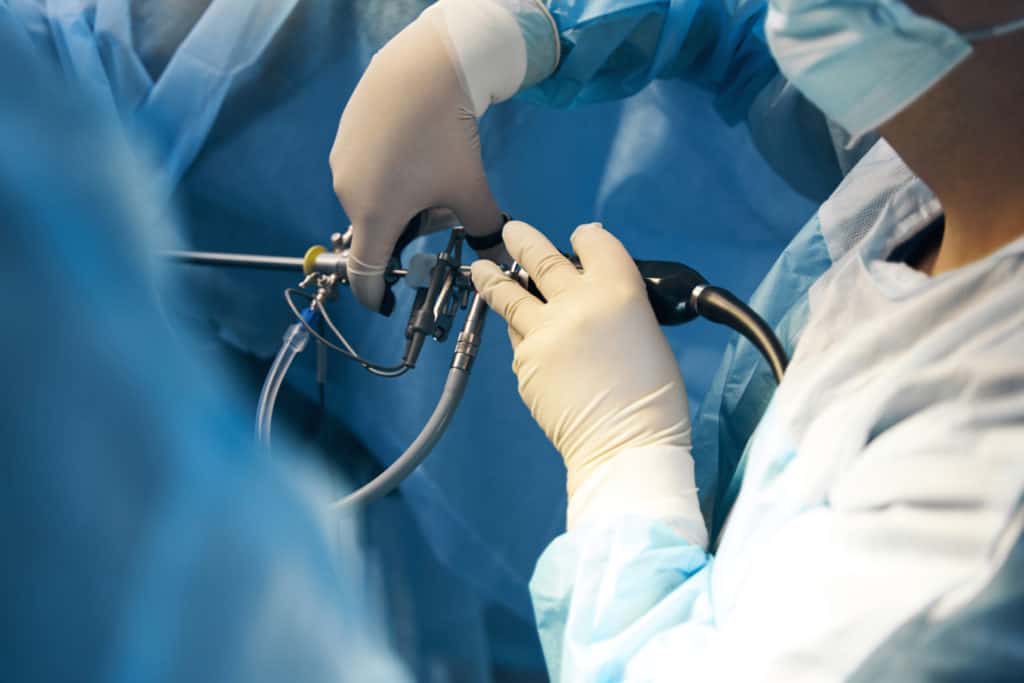What is Minimally Invasive Surgery in Orthopedics?
By Dr. Aman Dua, Orthopedic Surgeon
Minimally invasive surgery (MIS) has revolutionized the field of orthopedics, providing patients with safer and more efficient treatment options. Over the past few decades, this surgical approach has become increasingly popular due to its numerous benefits over traditional open surgery, including faster recovery times, reduced pain, and smaller scars. As an orthopedic surgeon, I’ve seen the tremendous positive impact minimally invasive techniques have on patients’ quality of life, enabling them to return to their daily activities sooner and with less discomfort.
In this blog, I will explain what minimally invasive orthopedic surgery is, how it works, the benefits it offers, and the conditions that are best suited for this advanced surgical approach.
What is Minimally Invasive Surgery in Orthopedics?
Minimally invasive surgery (MIS) refers to surgical techniques that use smaller incisions and cause less trauma to the surrounding muscles, tendons, and tissues compared to traditional open surgery. In orthopedic surgery, MIS is used to treat a wide range of conditions affecting the bones, joints, and spine.
In contrast to traditional open surgery, where large incisions are made to access the affected area, MIS involves the use of specialized instruments, advanced imaging technology, and tiny cameras (endoscopes) to visualize and operate on the target area. The goal of MIS is to minimize tissue disruption, resulting in shorter recovery times, reduced scarring, and less post-operative pain.
One of the most common types of MIS is arthroscopy, which is used to diagnose and treat joint problems. During an arthroscopic procedure, a small camera is inserted into the joint through a tiny incision, allowing the surgeon to view the inside of the joint on a monitor. Surgical instruments can then be inserted through additional small incisions to repair the damaged tissue.
How Do Minimally Invasive Techniques Work?
Minimally invasive techniques are made possible by advancements in medical technology and surgical instruments. Here are the key components involved in MIS:
Small Incisions
Instead of large incisions that expose the entire surgical site, MIS relies on several small incisions (usually less than an inch long). These incisions are just large enough to allow the insertion of specialized instruments and an endoscope, which is a tiny camera that provides real-time visuals of the surgical area.
Endoscopic Visualization
The endoscope is one of the most crucial tools in minimally invasive surgery. It allows the surgeon to see the area being operated on in high definition without needing to fully open the joint or tissue. The camera transmits images to a monitor, providing a clear and magnified view of the internal structures. This precision allows the surgeon to operate more accurately and efficiently.
Specialized Instruments
The instruments used in MIS are smaller and more delicate than those used in traditional surgery. These instruments are designed to perform precise movements through small incisions. Surgeons use these instruments to cut, shave, or remove damaged tissue, insert implants, or repair tendons and ligaments.
Advanced Imaging Technology
In some types of minimally invasive orthopedic surgeries, imaging technology such as X-rays, fluoroscopy, or computer navigation systems is used to guide the surgeon during the procedure. This ensures that the surgeon can accurately place implants, screws, or other devices without the need for large incisions.
Robotic-Assisted Surgery
In some cases, robotic-assisted technology is used to enhance the precision of minimally invasive procedures. Robotic systems allow the surgeon to control instruments with extreme precision, often improving outcomes in complex surgeries like joint replacements. The robot does not perform the surgery; rather, it assists the surgeon by offering greater control and reducing the risk of human error.
Benefits of Minimally Invasive Surgery Over Traditional Open Surgery
The rise of minimally invasive techniques in orthopedics has been driven by the significant advantages they offer over traditional open surgery. Here are some of the key benefits:
1. Reduced Recovery Time
Minimally invasive surgery causes less damage to the muscles, tendons, and other soft tissues surrounding the surgical area. As a result, patients typically experience a faster recovery compared to traditional surgery. For instance, patients who undergo minimally invasive joint replacement surgery often begin physical therapy within days of the procedure and can return to normal activities much sooner.
2. Less Post-Operative Pain
Because minimally invasive techniques involve smaller incisions and less trauma to surrounding tissues, patients tend to experience less post-operative pain. This often leads to reduced reliance on pain medications during recovery.
3. Smaller Scars
Traditional open surgery typically leaves large, noticeable scars, while minimally invasive procedures result in much smaller scars. This cosmetic benefit is especially important for patients who are concerned about visible scarring, particularly in areas like the knees or shoulders.
4. Lower Risk of Complications
Minimally invasive surgery reduces the risk of complications such as infections, blood loss, and damage to surrounding tissues. The smaller incisions and reduced tissue disruption lower the likelihood of post-operative infections and decrease the need for blood transfusions during surgery.
5. Shorter Hospital Stays
Patients undergoing minimally invasive procedures often have shorter hospital stays compared to those who undergo traditional surgery. In some cases, MIS can even be performed on an outpatient basis.
6. Improved Precision
The use of advanced imaging, endoscopy, and robotic assistance in MIS allows for greater precision during surgery. Surgeons can visualize and treat the affected area more accurately, which can lead to better long-term outcomes and fewer complications.
Conditions Best Suited for Minimally Invasive Orthopedic Surgery
1. Joint Problems
Knee Arthroscopy: Used to treat torn meniscus, damaged
cartilage, and ACL injuries.
Shoulder Arthroscopy: Commonly used for rotator cuff
repairs, labral tears, and shoulder impingement.
Hip Arthroscopy: Used to treat hip impingement, labral
tears, and loose bodies in the joint.
2. Spinal Conditions
Minimally Invasive Spinal Fusion: Performed to treat
conditions like spinal instability, degenerative disc disease, and herniated
discs.
Microdiscectomy: A minimally invasive procedure to remove
part of a herniated disc that is pressing on a nerve, often relieving leg or
back pain.
3. Fracture Repair
Minimally Invasive Plate Osteosynthesis (MIPO): Used to
treat fractures by placing plates and screws through small incisions,
minimizing damage to surrounding soft tissues.
Intramedullary Nailing: A minimally invasive technique for
treating long bone fractures, such as in the femur or tibia, using rods
inserted through small incisions.
4. Joint Replacement
Minimally Invasive Knee Replacement: Uses smaller incisions
to replace the knee joint with a prosthesis, leading to quicker recovery and
less pain.
Minimally Invasive Hip Replacement: Involves smaller
incisions and less disruption of the muscles surrounding the hip joint,
resulting in faster recovery times.
5. Tendon and Ligament Repairs
Achilles Tendon Repair: MIS techniques are used to repair
torn tendons with less tissue disruption.
Minimally Invasive ACL Reconstruction: Performed to
reconstruct a torn ACL in the knee using small incisions and grafts.
Conclusion
Minimally invasive surgery has transformed the field of orthopedics, offering patients a safer and more efficient alternative to traditional open surgery. By using advanced imaging technology, specialized instruments, and smaller incisions, MIS allows surgeons to perform complex procedures with greater precision and fewer complications. The benefits of minimally invasive orthopedic surgery—faster recovery, less pain, smaller scars, and reduced risk of complications—make it an attractive option for many patients.
If you are facing an orthopedic condition that may require surgery, consider discussing minimally invasive options with your surgeon. As always, the best treatment approach depends on your specific condition and overall health, so it’s essential to consult with an experienced orthopedic surgeon to determine the best course of action for your unique needs.

